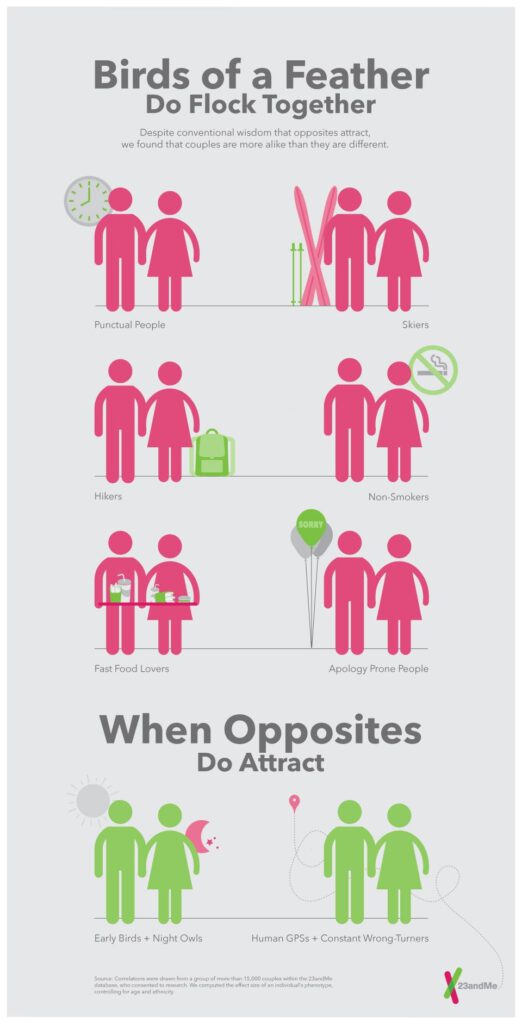For Valentine’s Day, we analyzed data from 15,298 real-world couples who had children together and found that people paired with others who were more like themselves than they were different.
Opposites, it turns out, may not attract after all
What Couples Have in Common
According to our data, partners tend to be about the same age, share the same education level, have a similar Body Mass Index, and even tend to be apologetic.
Athletes tended to pair with other athletes, downhill skiers with downhill skiers, hikers with hikers, and weightlifters with weightlifters. We also found that punctual people paired with others who were on time, and vegetarians tended to get together with other non-carnivores.
These are accurate correlations, but it is important to note that a correlation does not imply causation.
Since correlations can be misleading in other ways, one of 23andMe’s computational biologists, Aaron Kleinman, looked a little deeper. Aaron computed the effect size of an individual’s phenotype on their spouse’s phenotype, controlling for age and ethnicity. Even when the effect size is strong, it is still important to note that that doesn’t indicate causation either. We don’t know why couples share some of these phenotypes.
And this doesn’t give us any unique insight into why people fall in love. It could be that they share interests in common, but those shared interests could also come after they become a pair. For example, we found strong odds ratios for people who were former smokers being coupled together. Maybe overcoming their shared history of kicking the habit brought them together. Maybe not. We also found individuals who frequented drive-through food establishments paired with others who did the same, and we found individuals who could speak a second language paired with partners who also spoke a second language. Some of these correlations seem to make intuitive sense to us. For example, if you’re with someone who goes to drive-through food places, odds are you’ll likely go too.
It is also important to note what we did not find. There is no way to determine if two individuals are a couple just by looking at their DNA. Still, we found a lot of correlations.
Birds Not of a Feather
So what about opposites?
We did indeed find that opposites appeared to attract in a few ways. Our data shows that a night person is likelier to get together with a morning person. Those who attract mosquitoes end up with those who don’t, and luckily, people with a good sense of direction appear to pair with those who don’t have one.
However, another of our researchers, Emma Pierson, found more data showing that these cases of opposites attracting were the exception to the rule. Emma found that couples who had similar BMIs reported that they were happier. However, she didn’t find any effect for height, so no need to break up with your basketball player hubby.
Happy Valentine’s Day.




